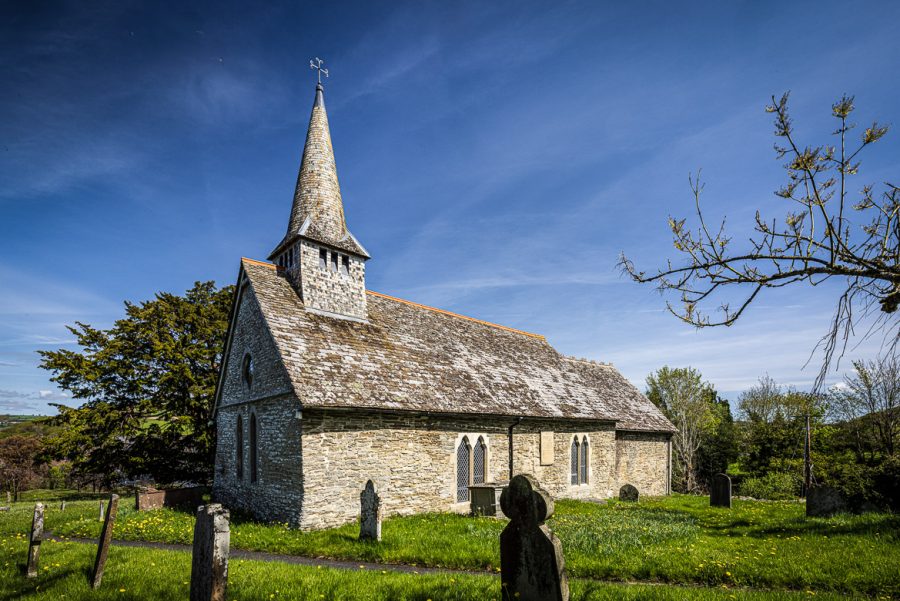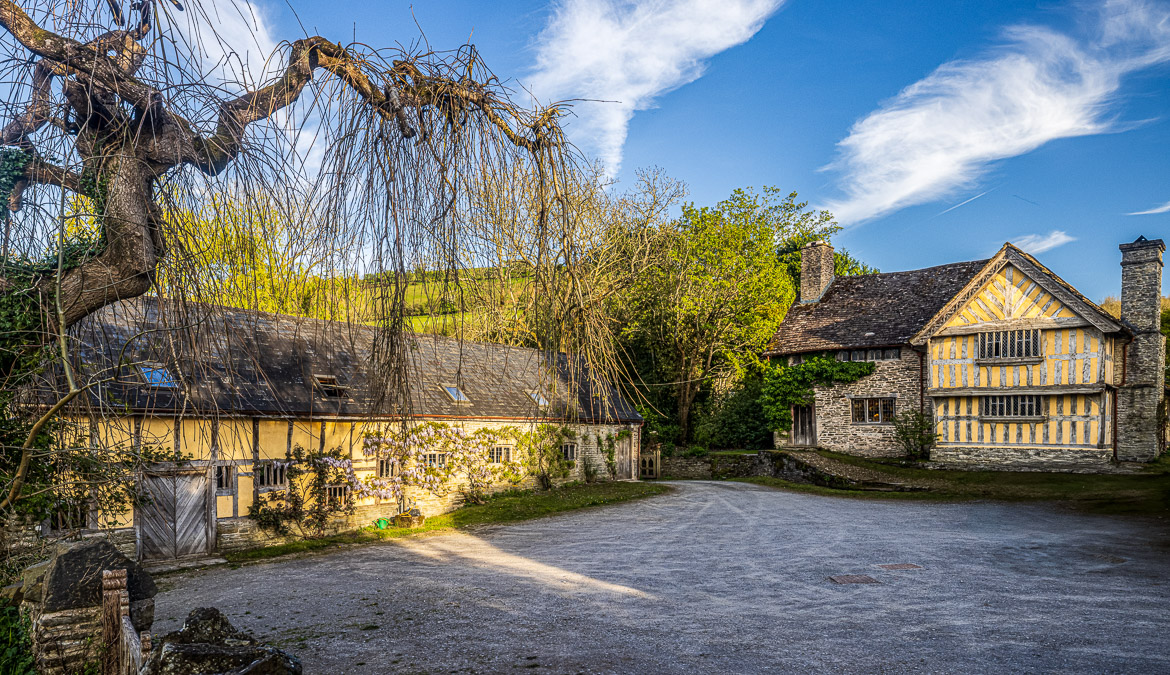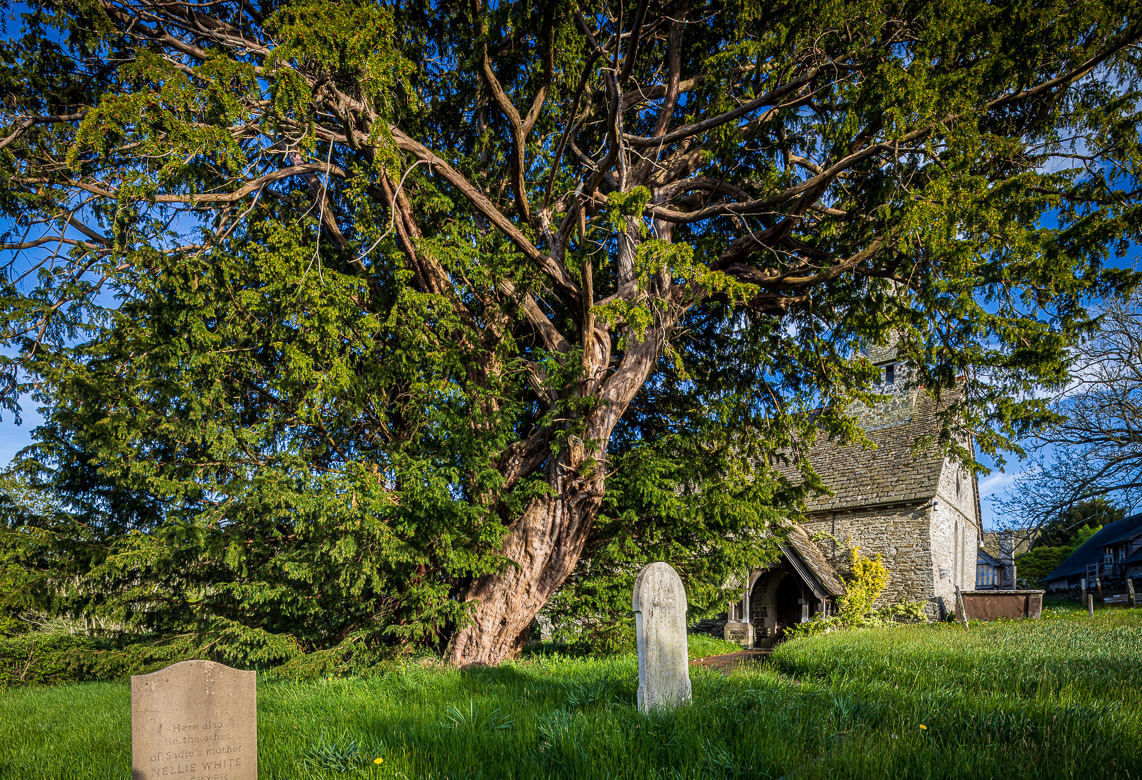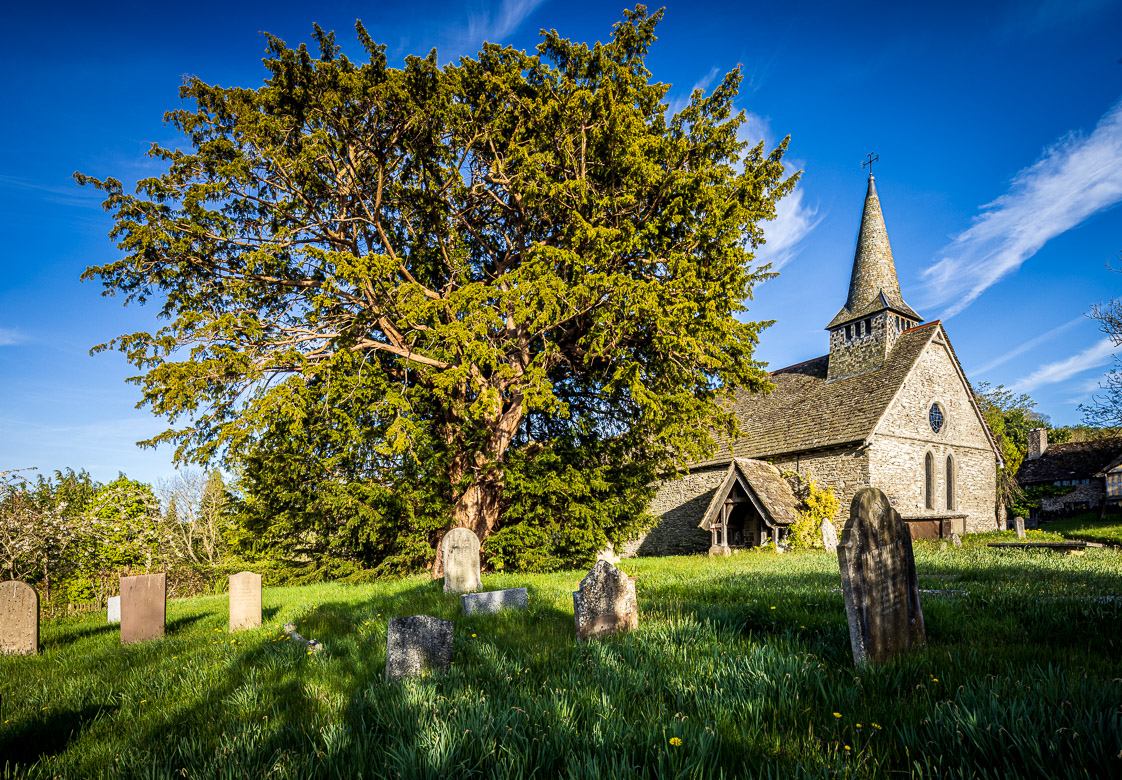
The Yew Tree in Folklore and Religion

The yew tree holds a significant place in history and folklore. For the ancient Celts the tree symbolised death and resurrection and this continued into the Christian era. Yew branches were carried on Palm Sunday and at funerals for a long time. And the yew tree’s evergreen status and its long life span made it a symbol of everlasting life and renewal.
Drooping branches of old yew trees can root and form new trunks, where they touch the ground. Thus, the yew came to symbolise both death and resurrection in Celtic culture. The tree teaches us humility and resilience. The needles are poisonous which may have further contributed to the yew tree’s connection with death.
Shakespeare was obviously aware of these qualities, when he let Macbeth concoct a poisonous brew including “slips of yew, silvered in the moon’s eclipse”.
The themes of death and resurrection continued into the Christian era. People have planted yew trees inside or beside church yards and in some cases, it seems that very old yews were already growing on the site where the church was built. Some of the trees even predate Christianity.
Another reason for keeping yew trees inside church yards is that animals wouldn’t stray into them due to the poisonous nature. And the heartwood is red whereas the sapwood is white. The colours symbolising the blood and body of Jesus.
And in medieval England the yew tree was the material for making the famous English longbows. The longbows caused a devastating effect on the French in the hundred-year war between England and France.
St Michael’s Churchyard
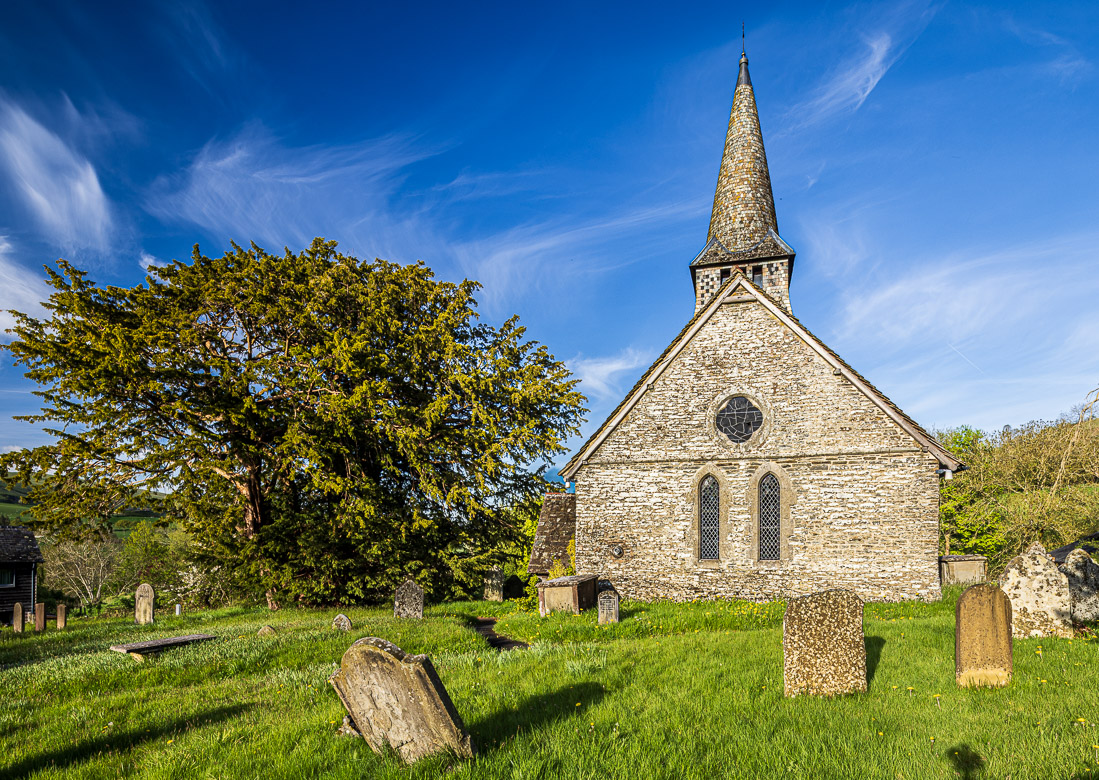
Not far from where I live is St Michael’s churchyard in Discoed in Wales. The Discoed Yew is probably one of the five oldest in Britain and is estimated to be 5,000 years old. Others claim that it is “only” between 2,000 and 3,000 years old. In any case it was there long before St Michael’s church was built, probably long before Jesus Christ walked on our earth.
The old yew tree, with a girth of more than 11 metres, probably means that the present churchyard was an old ceremonial place, probably a pagan site before the first Celtic hermit settled here. It is difficult to date the church, but the circular shape of the yard and a well spring just outside the churchyard gate suggest that the church was established in the 5th or 6th century. However, the first written record of a church comes from 1291, when the manor of Discoed belonged to the powerful Mortimer family (from Wigmore, a little bit north of Eardisland).
